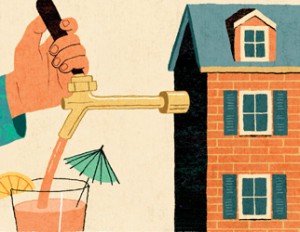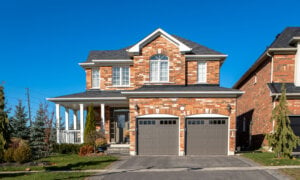How to boost cash flow in retirement with real estate
Flipping condos to make a quick buck? That’s a game for speculators. But with interest rates at all-time lows, even conservative retirees might consider boosting their cash flows with real estate.
 If you’re at the age where you’re craving income, you’ve probably wondered whether owning a rental property is a good way to get it. After all, the yield on fixed-income investments is at all-time lows and stock dividends aren’t much better. Adding a residential income property or two could provide a reliable boost to your cash flow.
Problem is, with real estate prices so high relative to rents these days, that won’t be easy. Fortunately, we’ve talked to three seasoned, conservative real estate investors who say it’s still possible to find the kind of properties that generate steady income without taking on too much risk. That might make real estate a good addition to your portfolio if you’re approaching retirement or are already there.
While each approach is different, our three investors use a buy-and-hold approach that focuses on simple properties. They all avoid trendy hotspots like Toronto and Vancouver. And they shudder at the thought of flipping condos. “When we hit our 50s we’re looking for much more boring investments,” says Don Campbell, author of Real Estate Investing in Canada. Glenn Kohaly of Kelowna, B.C., and Rui Torrao of Toronto have their own untrendy approaches.
Read on to learn about real estate strategies that can give you that reliable income you’re looking for.
If you’re at the age where you’re craving income, you’ve probably wondered whether owning a rental property is a good way to get it. After all, the yield on fixed-income investments is at all-time lows and stock dividends aren’t much better. Adding a residential income property or two could provide a reliable boost to your cash flow.
Problem is, with real estate prices so high relative to rents these days, that won’t be easy. Fortunately, we’ve talked to three seasoned, conservative real estate investors who say it’s still possible to find the kind of properties that generate steady income without taking on too much risk. That might make real estate a good addition to your portfolio if you’re approaching retirement or are already there.
While each approach is different, our three investors use a buy-and-hold approach that focuses on simple properties. They all avoid trendy hotspots like Toronto and Vancouver. And they shudder at the thought of flipping condos. “When we hit our 50s we’re looking for much more boring investments,” says Don Campbell, author of Real Estate Investing in Canada. Glenn Kohaly of Kelowna, B.C., and Rui Torrao of Toronto have their own untrendy approaches.
Read on to learn about real estate strategies that can give you that reliable income you’re looking for.












